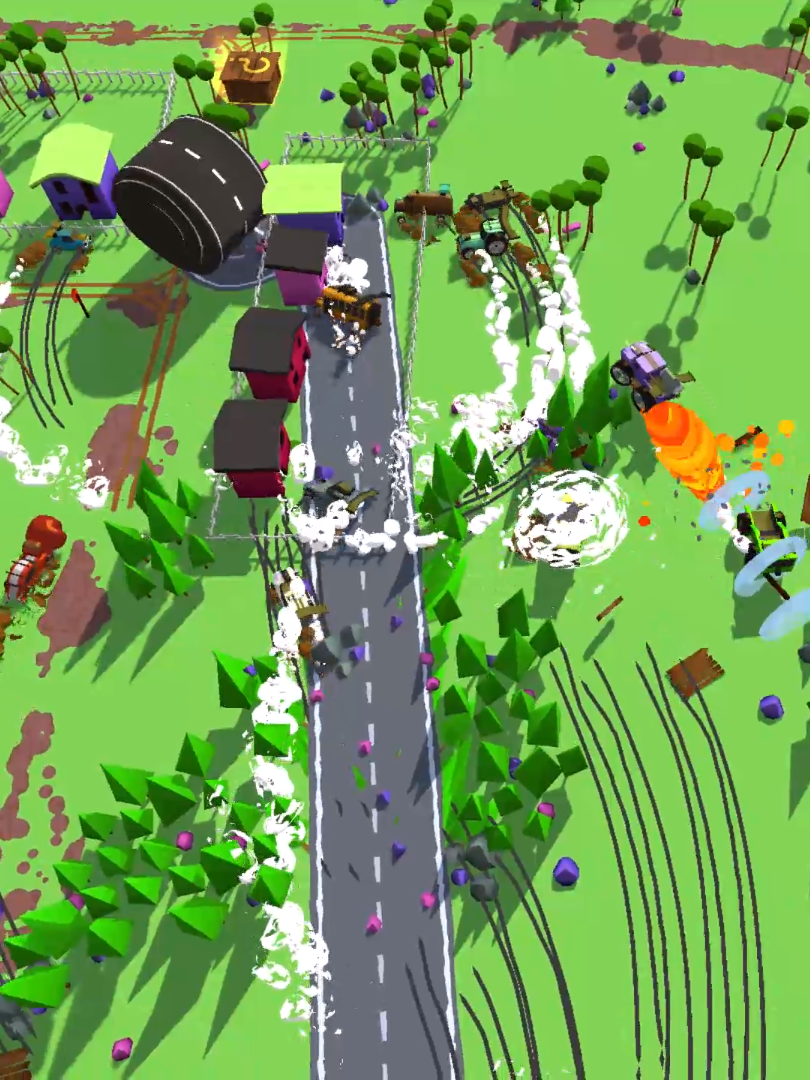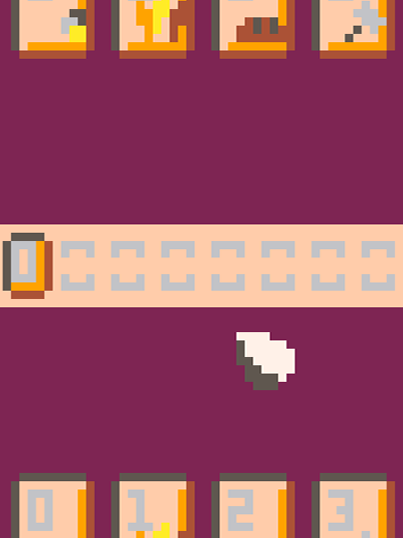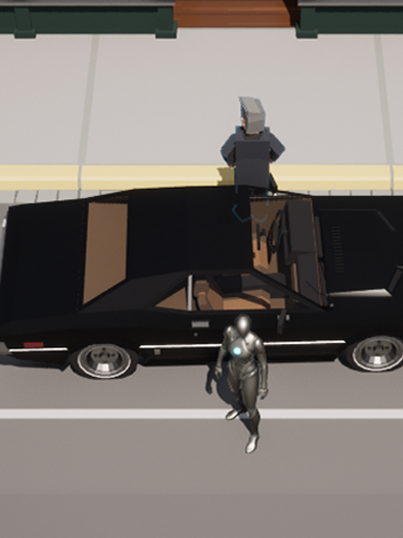- Solve the everyday problems of a small village of people stuck in their ways
- Singleplayer
- Created in July 2021
- Developed as a team of 2 with an Audio Designer
- Singleplayer
- Created in July 2021
- Developed as a team of 2 with an Audio Designer
This is one of my first ever projects that I consider "complete". I made it for the Games Jobs Live Game Summer Parade in July 2021 with the theme "One Time Use".
I wanted to set myself a goal to do something I hadn't done as much before, in this case narrative design; instead of trying to come up with unique gameplay I wanted to create a unique world and fill it with interesting characters. The focus would be on characters with only a loosely defined fantasy world; my main inspiration for the look and feel would be "Superbrothers Sword & Sworcery EP" from 2011.
A melancholic world filled with characters who have simple problems but are too stuck in their ways to solve them. Into this world I would place the protagonist with the very simple task to solve everyone’s problems. To do this the Hero would receive a single coin that they would need to give to the villagers to solve problems; in return the villagers would give the player something else as a reward that could then be used to solve someone else’s problem.
Finally, the game needed a challenge which would come from "false" answers; a solution that would solve a problem but mean the player couldn't solve all the problems in one go. The player was expected to fall into these false answers which meant they would most likely not "solve" the game in one go. This was enabled by allowing the player to repeat the same day in what the game refers to as "loops".
Return to MAIN PAGE:
Or keep reading about this project!
Planning
The first step was figuring out the characters and solutions. The player would start with a coin and would be able to find 3 items in the world. They would also be able to obtain a 4th item without trading through dialogue.
Each of these items would then need several options for solving problems which would give the player a reward which would solve a different problem. This means the actual solution would consist of 5 distinct chains of trades. This was done to keep the possible number of false solutions low and give the player multiple entry points. It was important to try and keep the player from ending up in a situation where they had nothing left to try.
I decided early on that the player would start with the coin and to use the coin as a sort of "key" item. Most NPCs would give their reward to the player in exchange for the coin; this wouldn't solve their problem but allow the player to get access to new items. This should always leave the player with something new to try. However, for the final solution the coin shouldn't be used specifically because it had too many applications. This is where the Beggar comes in, the first NPC the player is likely to talk to. She asks for the coin and doesn't give anything in return, making her unappealing to "trade" with. However, she counts as a villager and in the final solution the player must give her the coin.
Notetaking
I realized early on that this game would require some form of information tracking considering the amount of information the player would need to formulate the solution. Inspired by my experience as a child playing Myst I decided an in-game Notepad would be the easiest to implement in the allotted time.
This became the Journal:
This became the Journal:
The Journal has a seperate page for each character with a textfield where the player can write down information. This is saved between loops and sessions so if the player comes back later their notes are preserved. The pages also have status messages that reflect the current state of the characters in each loop. This makes the Journal a functional checklist to help the player keep track of who they have helped as well.
Results
In the end I feel very proud of this project, from reading the comments it seems I was successful in what I set out to do. Many players said they enjoyed walking around and interacting with the NPCs, some even called out the dialogue as entertaining and full of character. I imagine most players only did one loop and treated this more as a small exploration rather than a full-on puzzle due to limited time from trying the different Jam games.
The main issues people had been technical; mostly the text scroll speed being too slow in the initial jam build. Some players also clearly didn't mesh with the very slow and artsy feel of the game. While I understand why some players might bounce off from this experience it was pretty much intentional since my focus was on storytelling and not gameplay.
We placed 12th out of 115 entries in the end.








